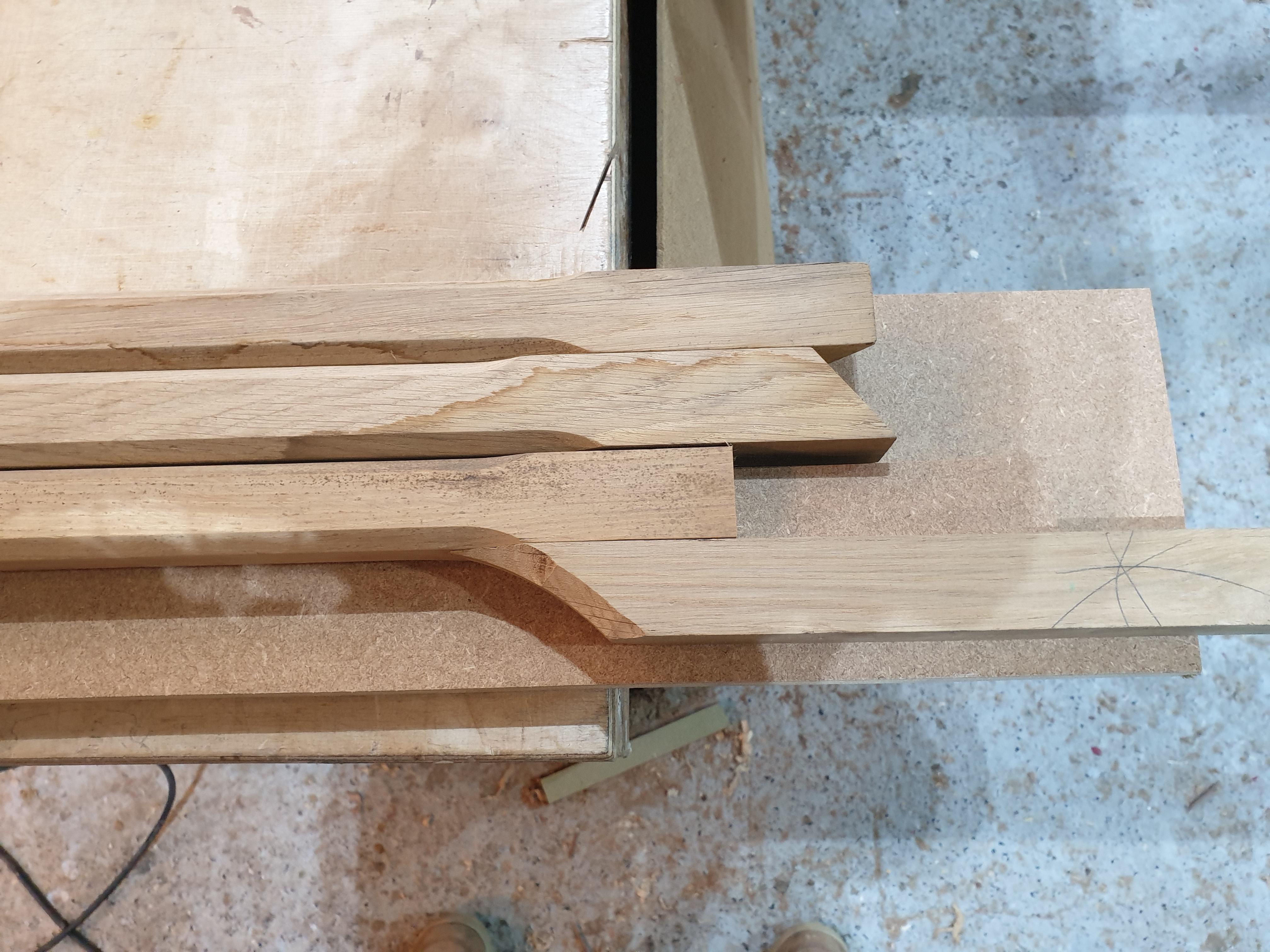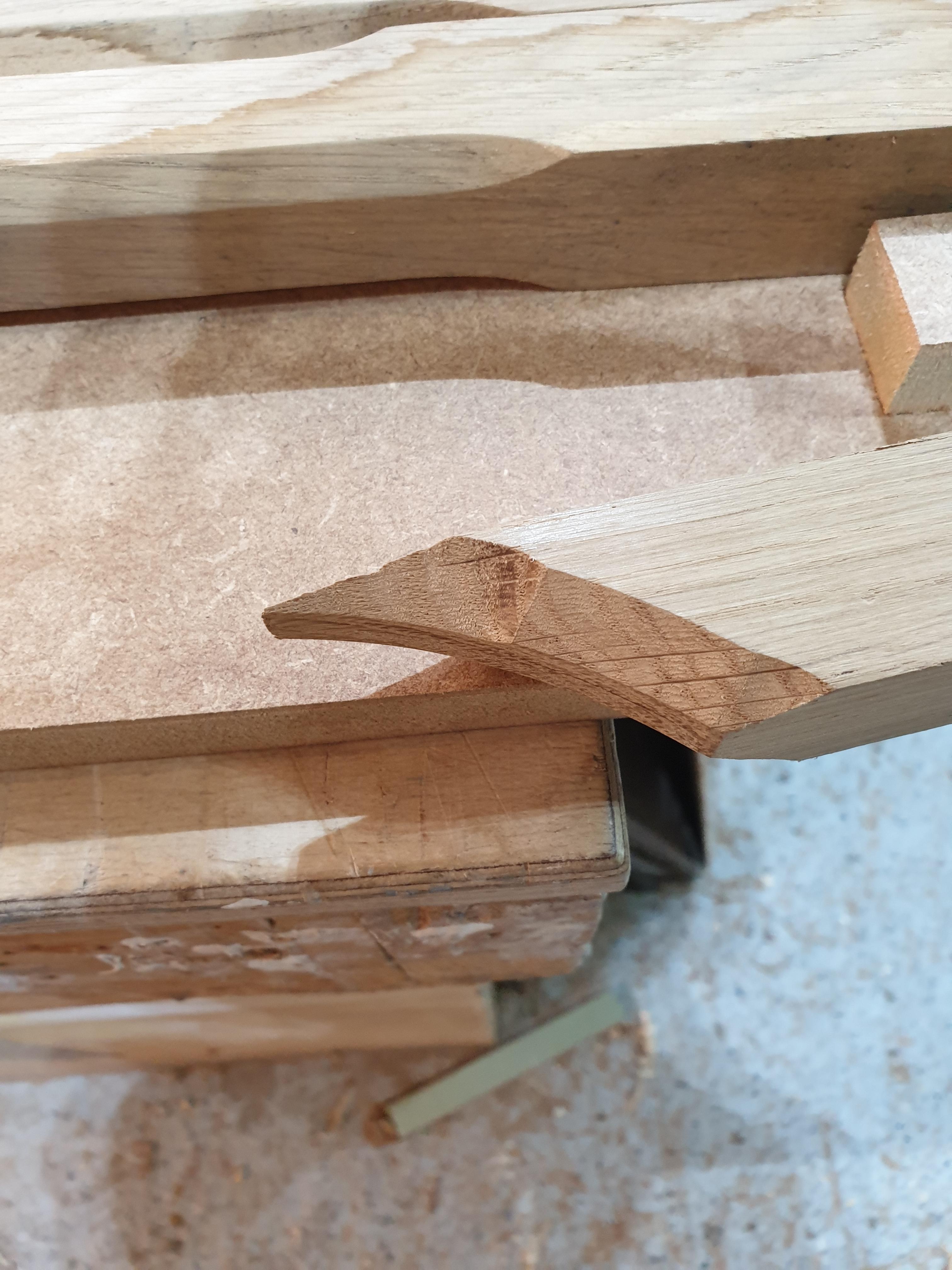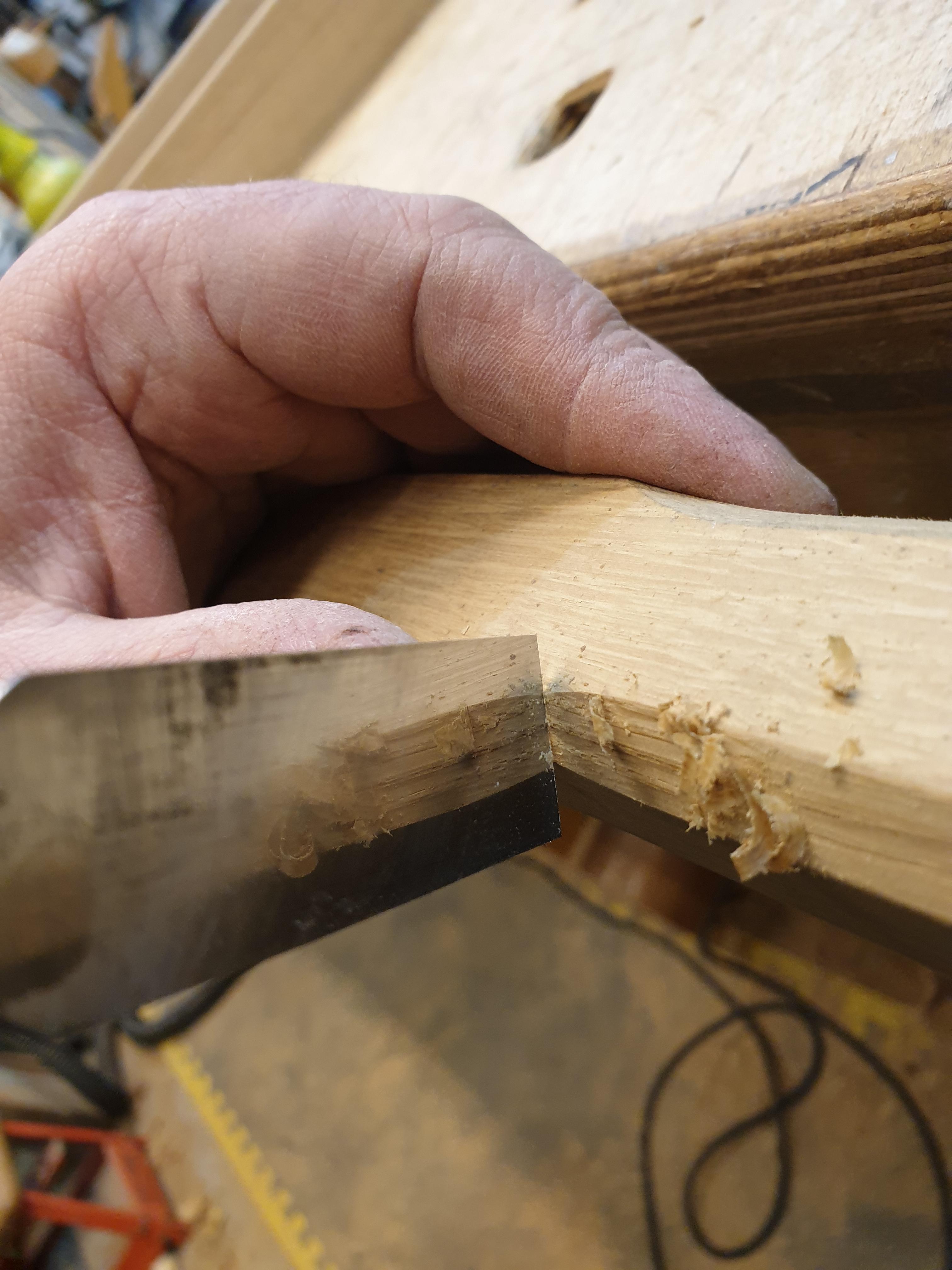MikeG.
Established Member
I've always done chamfer stops by hand, even if the chamfer itself was done on a machine. I am now faced with making a staircase of 40 ballusters, each stop chamfered on all 4 sides, and half of them stopped and re-started in the middle (ie 2 stopped chamfers per edge). That's 480 chamfer stops altogether, and I haven't the time to do those all by hand. I really dislike that machined look where the edge is just pushed onto the cutter or taken straight off, and besides, in oak it is very hard to stop that burning.
So, what are the machined alternatives? I have seen on site where the chamfer slopes down from nothing to the full depth over 15 or 20mm, but for the life of me I can't think how that is done on the machine. Is it done on a drum sander, maybe? I can see how it could be done holding the machine and using a template, and if it comes to it, I'll do that. Just to add to the picture, there are 4 different styles of balluster and 3 different lengths (it's a cut string stair).
So, what are the machined alternatives? I have seen on site where the chamfer slopes down from nothing to the full depth over 15 or 20mm, but for the life of me I can't think how that is done on the machine. Is it done on a drum sander, maybe? I can see how it could be done holding the machine and using a template, and if it comes to it, I'll do that. Just to add to the picture, there are 4 different styles of balluster and 3 different lengths (it's a cut string stair).








































